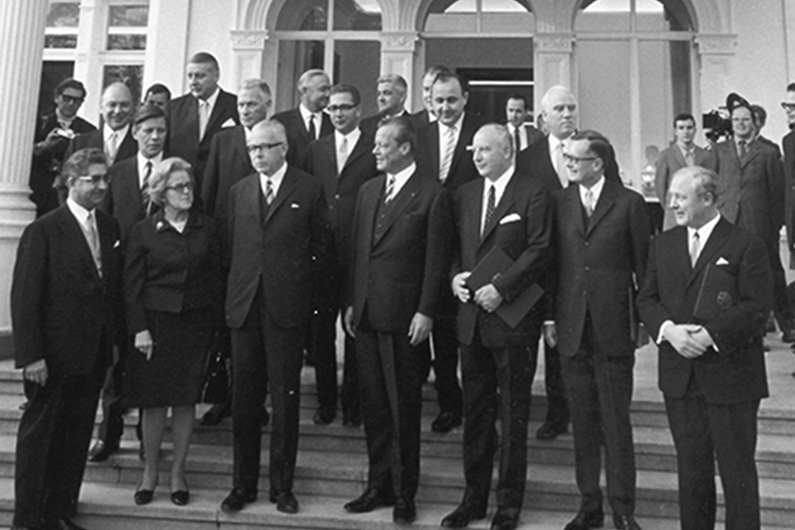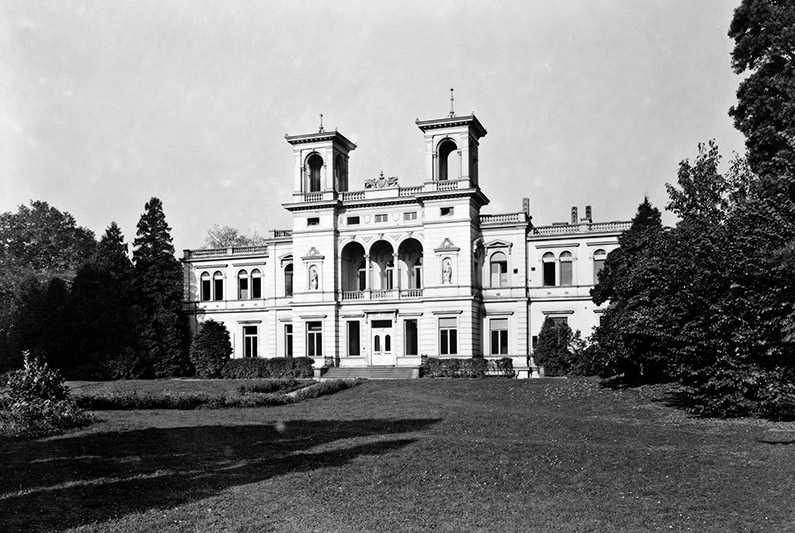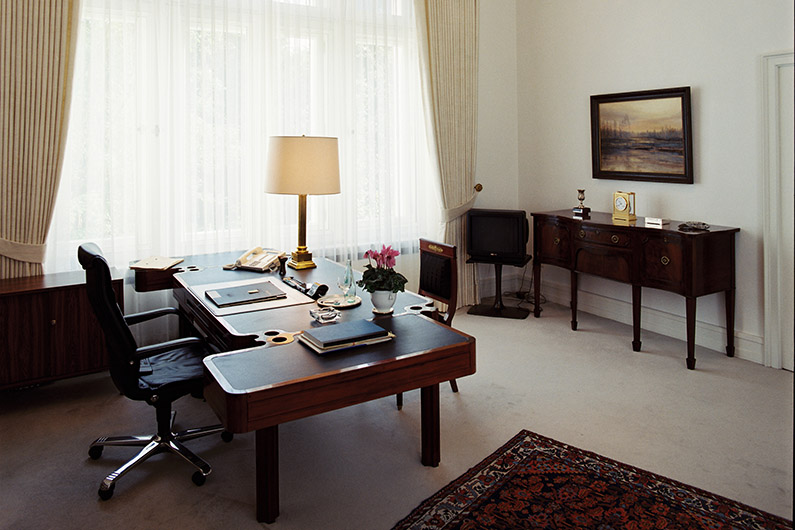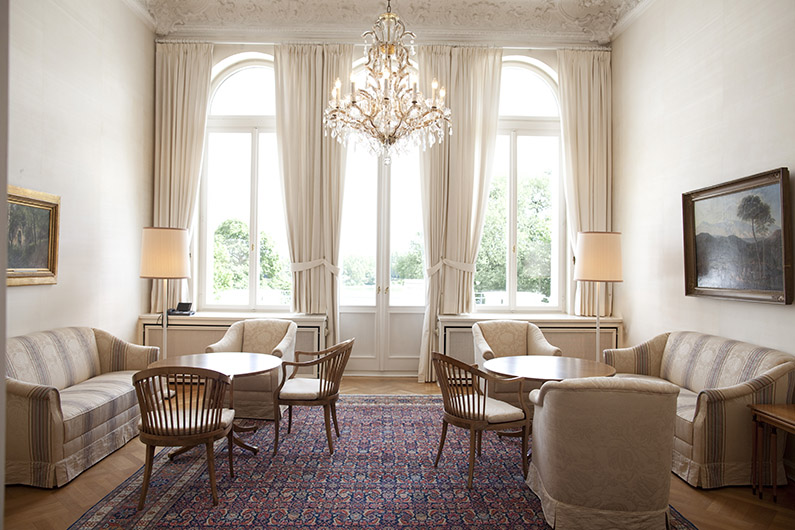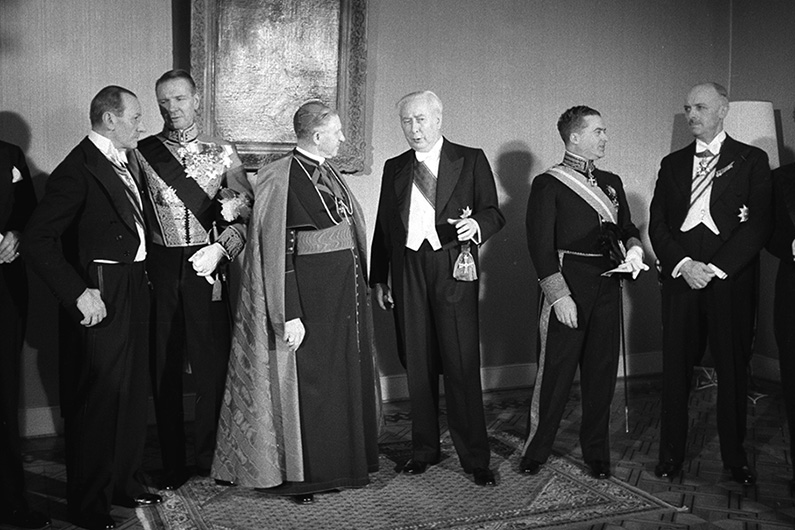This neo-classical villa (1860) was designed by August Dieckhoff, 2011.
dpa
The ground floor of Villa Hammerschmidt contains the rooms that were used for social functions, including the dining room, 2005.
Bundesregierung/Ute Grabowsky
You can visit the Villa Hammerschmidt by appointment.
To the visitor information
Willy Brandt’s first cabinet is sworn in by Federal President Gustav Heinemann at Villa Hammerschmidt, 22 October 1969.
Bundesregierung
During a renovation of the building, its two turrets were removed, 1949.
Erna Wagner-Hehmke/Hehmke-Winterer, Düsseldorf
Visitors can visit the representative rooms in the Villa Hammerschmidt, as well as the study of Federal President Roman Herzog, 1996.
Bundesregierung/Arne Schambeck
The furniture in the upper balcony room on the Rhine side of the villa was built in the style of the French Empire of 1830 and comes from Schloss Wilhelmshöhe near Kassel, 2011.
Bundesregierung/Ute Grabowsky
Journalists reported about the new year’s reception on 7 January 1953 with Federal President Theodor Heuss at Villa Hammerschmidt.
Bundesregierung
